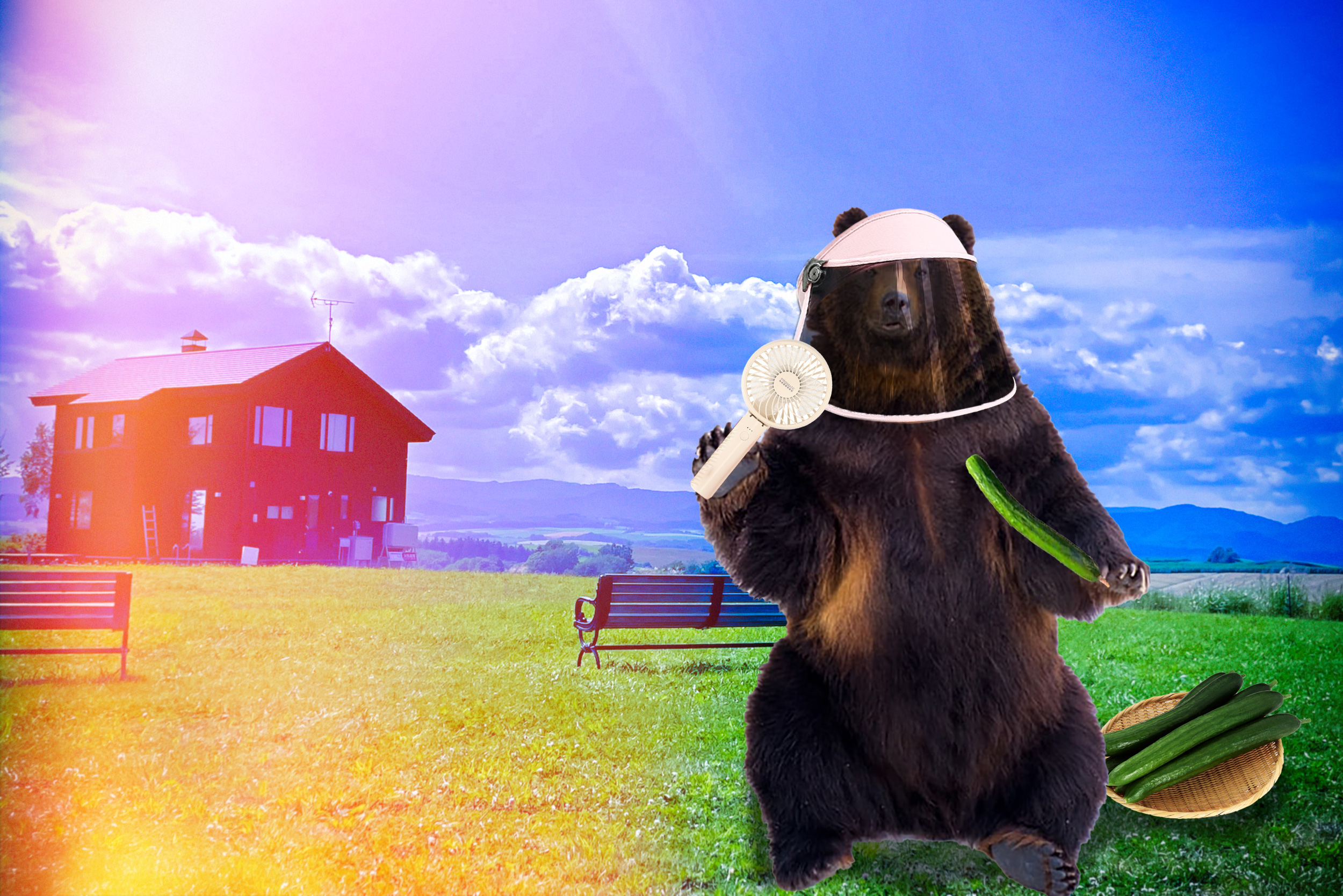Issue:
August 2023 | Letter From Hokkaido
Don’t be fooled by Hokkaido’s temperate summers – the climate crisis is already here

In the last century, the notion of climate refugees conjured up visions of populations in sub-Saharan Africa or parts of South Asia fleeing heat-damaged regions of the planet for a warming, but more stable, climate elsewhere.
But by the time the Paris Agreement to limit global warming was signed in 2015, it was clear a vast swath of Japan, including Tokyo, Nagoya, and the Kansai region – together home to over half the country’s population – was rapidly becoming dangerously hot and humid, and that residents there would have to think more seriously about the long-term risks posed to their health by their increasingly hot urban environment.
The COVID-19 pandemic gave some people the opportunity to work remotely and, as I discovered when I relocated to Sapporo last year, I was not alone in choosing Hokkaido at least partially to avoid the longer, hotter, more humid summers on Honshu.
It isn’t nearly as bad here as it is in Tokyo and Kansai. July temperatures in Sapporo rarely rose above 25C during the day, and after 4 p.m., quickly cooled to the low 20s or even the high teens in parts of the city. The humidity was relatively low throughout the month, and with a light steady breeze there was no need to switch on the air conditioner to get to sleep at night.
But cool summers hardly mean that Hokkaido is escaping the effects of global heating.
In fact, evidence of climate change can be found on Hokkaido’s land and surrounding seas. Not necessarily in the dramatic way that searing heat waves and flooding elsewhere in the country made the TV news on a nightly basis last month. But Hokkaido’s climate is warming, and that is having an impact, especially on fisheries and agriculture.
Rice and sea urchins are useful examples. Even just two decades ago, it was rare to see rice paddies in Hokkaido, as the climate had long been considered too mild, and for too long, to grow rice. But now it is second only to Niigata prefecture in terms of rice cultivation and yield. https://www.hokkaido-kome.gr.jp/english/about/. In fact, Hokkaido’s Yumepirika and Nanatsuboshi rice varieties are some of the best in the country, and highly sought after by finicky gourmands.
That is all well and good for rice farmers, but it is also a worrying sign of how Hokkaido’s climate has warmed in recent decades.
The sea around Hokkaido is also warming up, resulting in, among other things, an increase in red tides https://www.nhk.or.jp/hokkaido/articles/slug-naf00941bfaf6 that kill large numbers of salmon and uni (sea urchins). I first heard about problems with the latter back in 2006, when, on a trip the far north island of Reibun, an izakaya owner who catered to the local fishing industry and a couple of his well-refreshed customers told me that a warming Sea of Okhotsk and Japan Sea were already reducing their catch.
I mentioned that Kenji Fujimoto, who worked as a sushi chef for the former North Korean leader Kim Jong-il, had claimed he made trips to Reibun and neighboring Rishiri island to source uni for Kim, who never settled for anything less than the best produce. I wondered if uni shortages in remote northern Hokkaido might eventually spell trouble not only for local marine ecosystems and fishing industry profits, but also for Japan-North Korean relations. But I decided it was unwise to voice that particular fear in a smoky izakaya full of merrily drunk locals.
That was then. Today, uni from Rishiri and Reibun is not easy to find, even in Sapporo in mid- to late July at the height of the sea urchin season. When you do find them, expect to pay anything from ¥3,000 to ¥8,000 for uni donburi in Sapporo at this time of year.
Thankfully, the heat-island effect in most Hokkaido cities doesn’t feel as severe in summer as the hellish furnaces of Tokyo and Osaka’s concrete jungles. There is a lot more greenery here, and wider streets mean the heat is less concentrated. Scenes of young TV reporters in Kyoto and Tokyo last month holding thermometers near the ground to measure street-level temperatures topping 40C and, in Kyoto, as high as 50C – along with early-morning temperatures already in the low 30s – shocked pretty much everyone I know in Hokkaido.
But climate change is not just about the current weather. Longer-term predictions warn that without decisive action, the average temperature in Hokkaido will rise by several degrees by the end of the century, making Sapporo feel more like Tokyo in the summer. Winters will continue to get warmer, although some climatologists believe that Sapporo will, perhaps, still get enough snow in the coming decades to host the Winter Olympics.
The disruption the world is now experiencing in the form of floods, droughts, wildfires, more violent typhoons, hurricanes, and tornados, and longer, hotter summers and shorter, warmer winters, is having an impact here in Hokkaido. Long-term residents know this better than relatively recent arrivals like me and the planeloads of tourists from other parts of Japan and Asia who flock to Hokkaido in the summer to escape the heat, however briefly.
It is usually cooler here, but Hokkaido, like the warmer climes those visitors come from, is under increasing threat from a warming planet. By all means come to Hokkaido, and make the most of the cool weather while you can.
Eric Johnston is the Senior National Correspondent for the Japan Times. Views expressed within are his own and do not necessarily reflect those of the Japan Times.

